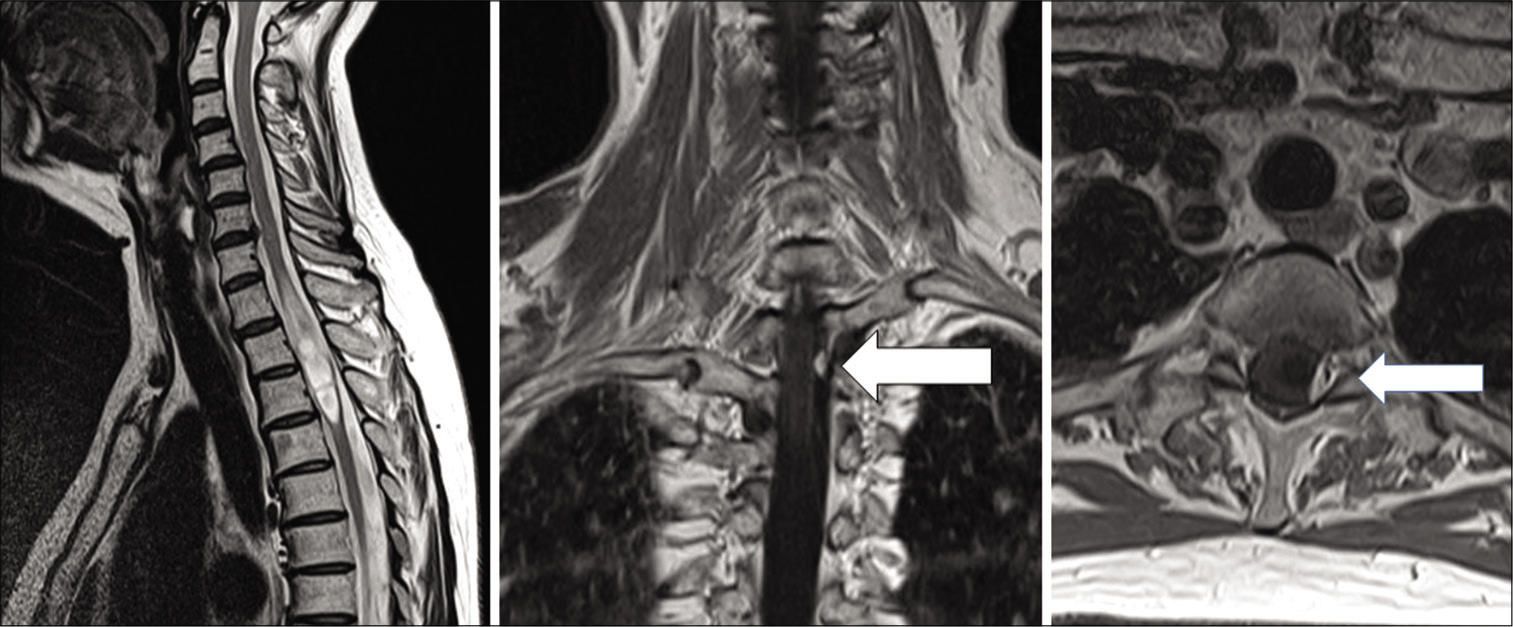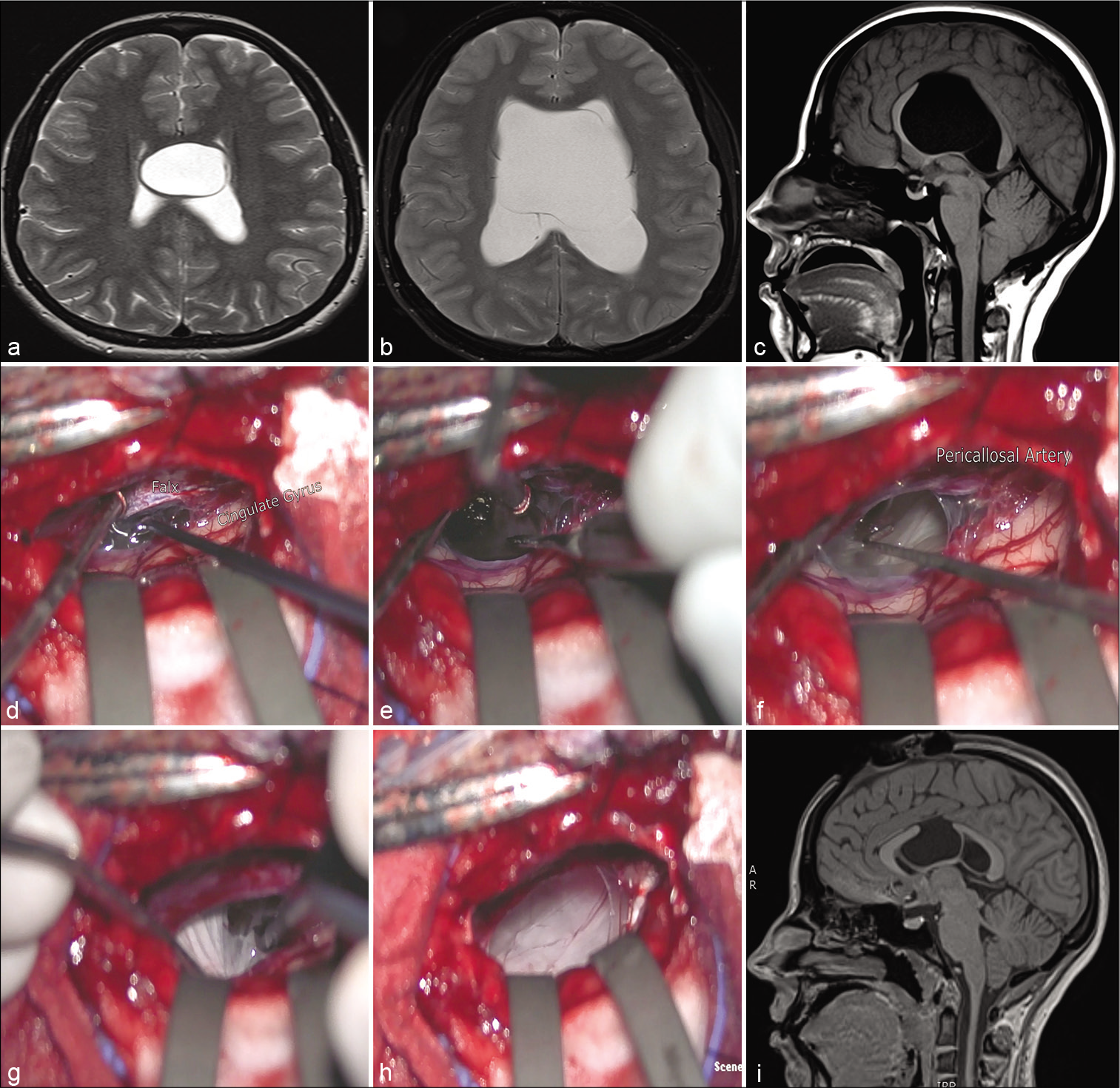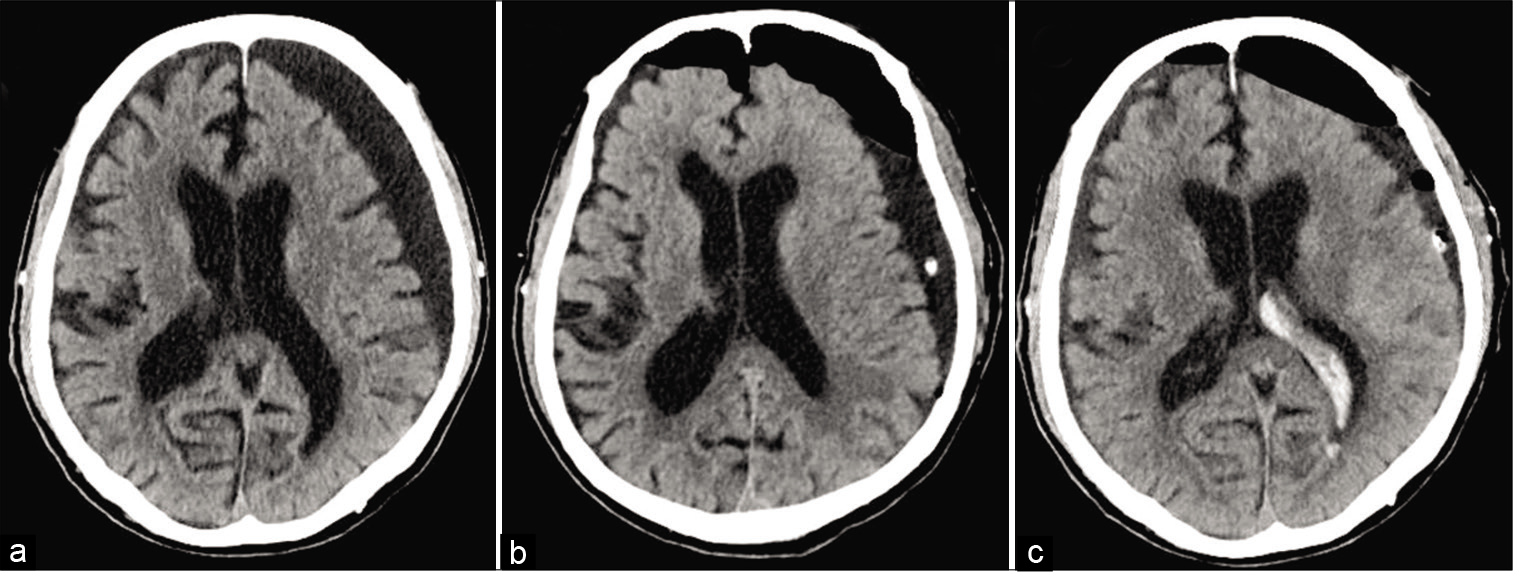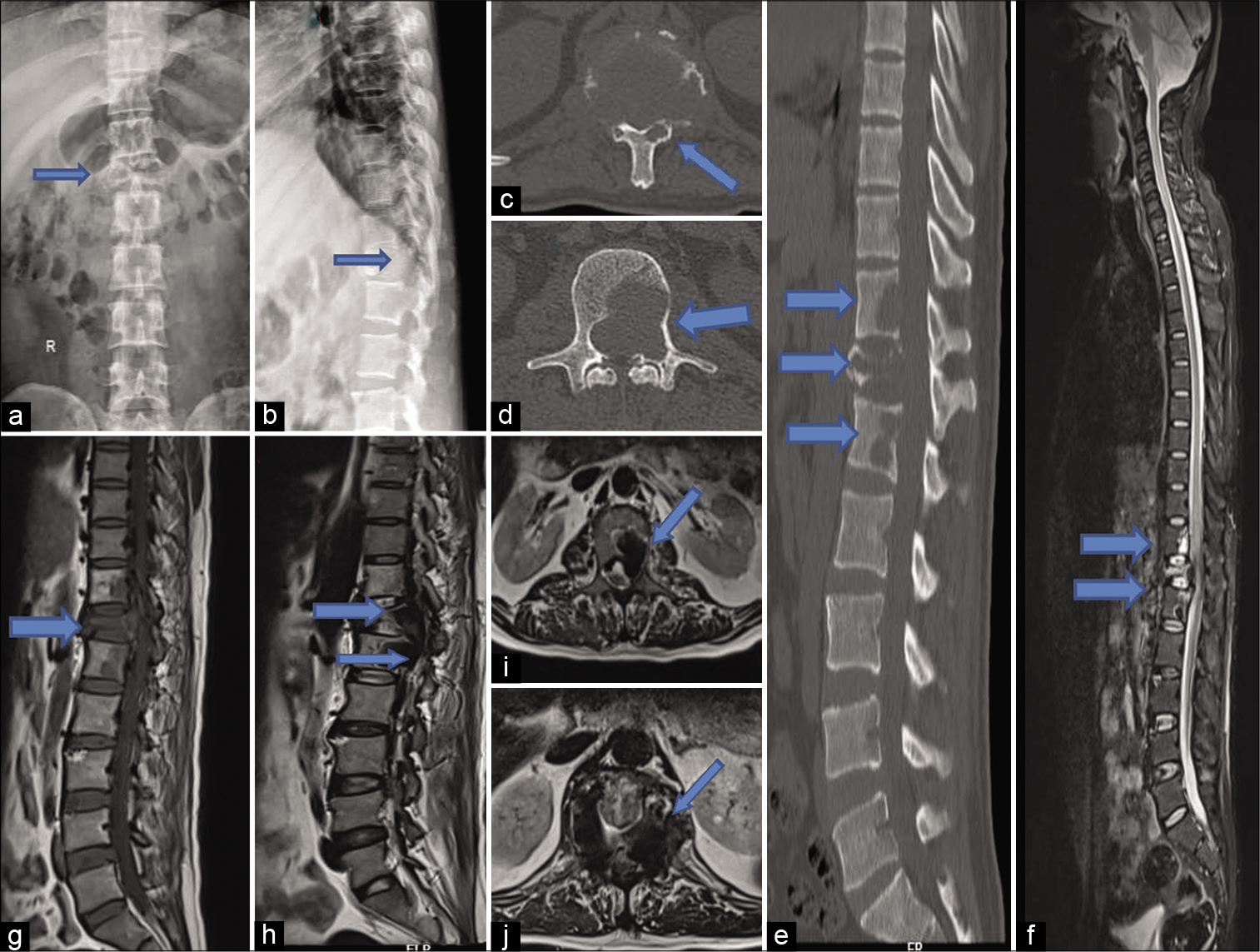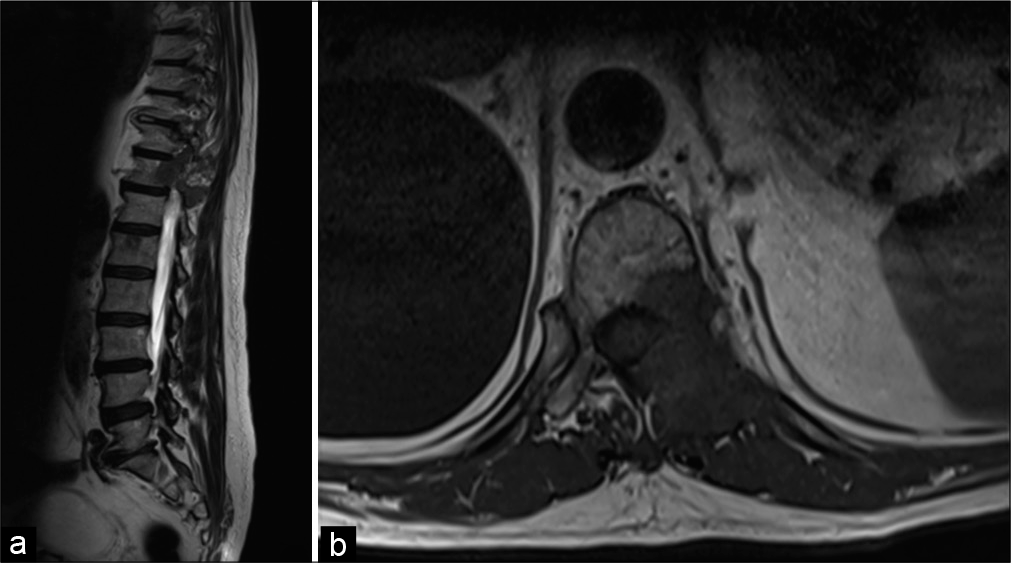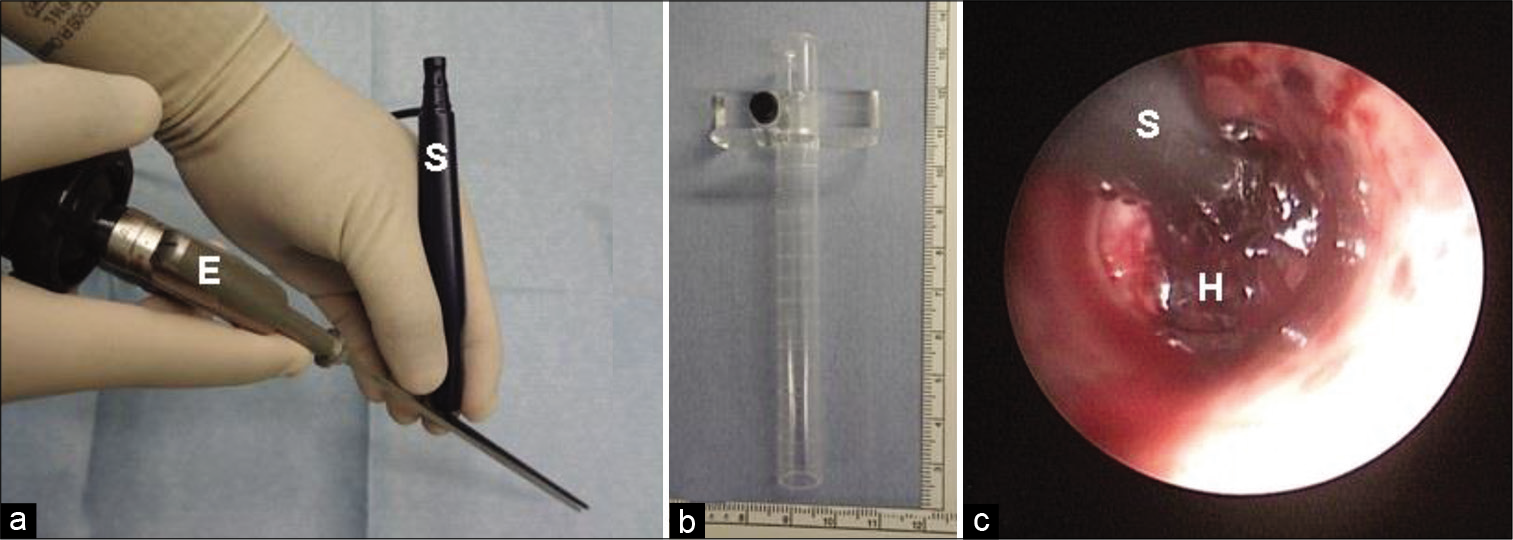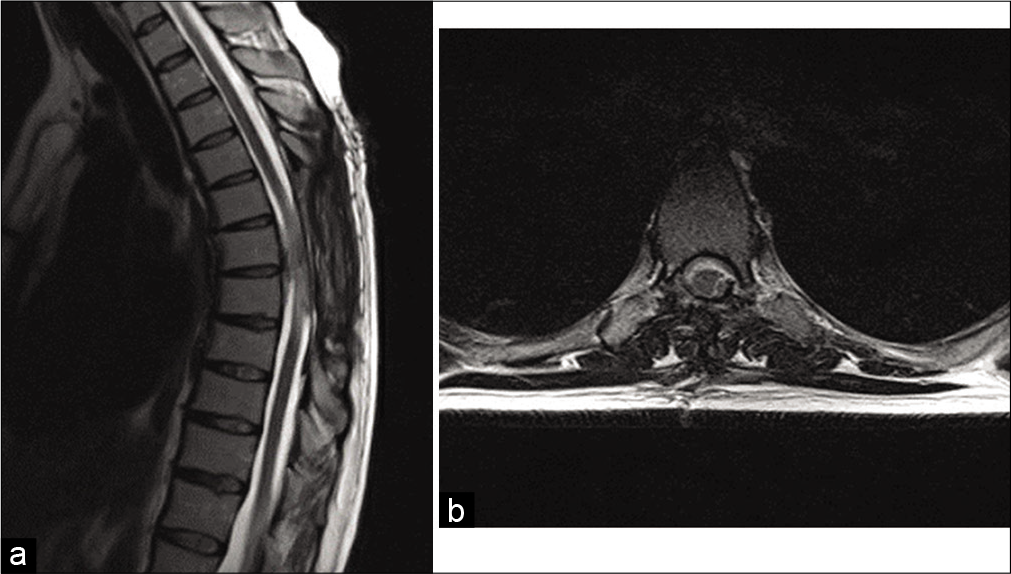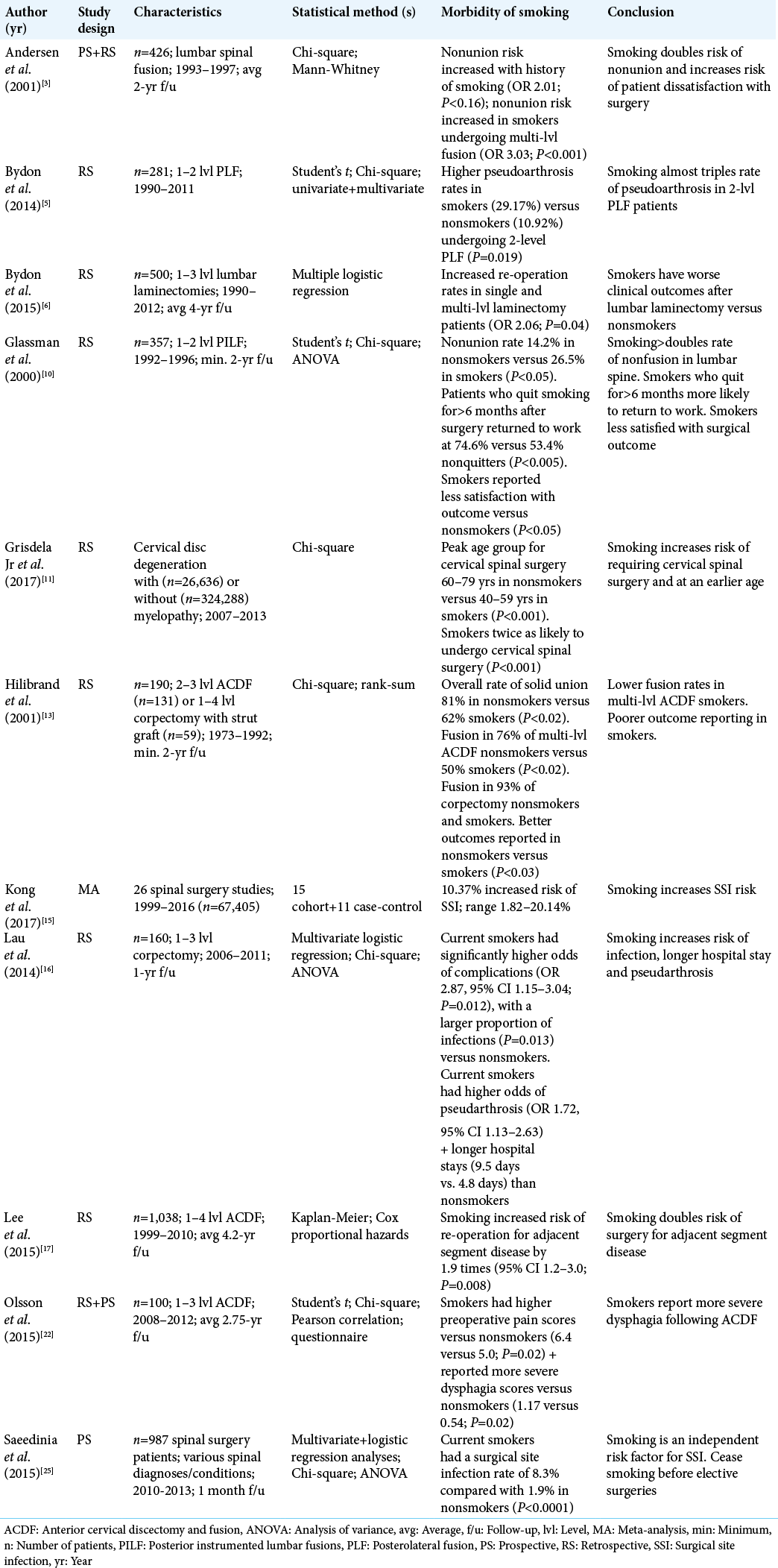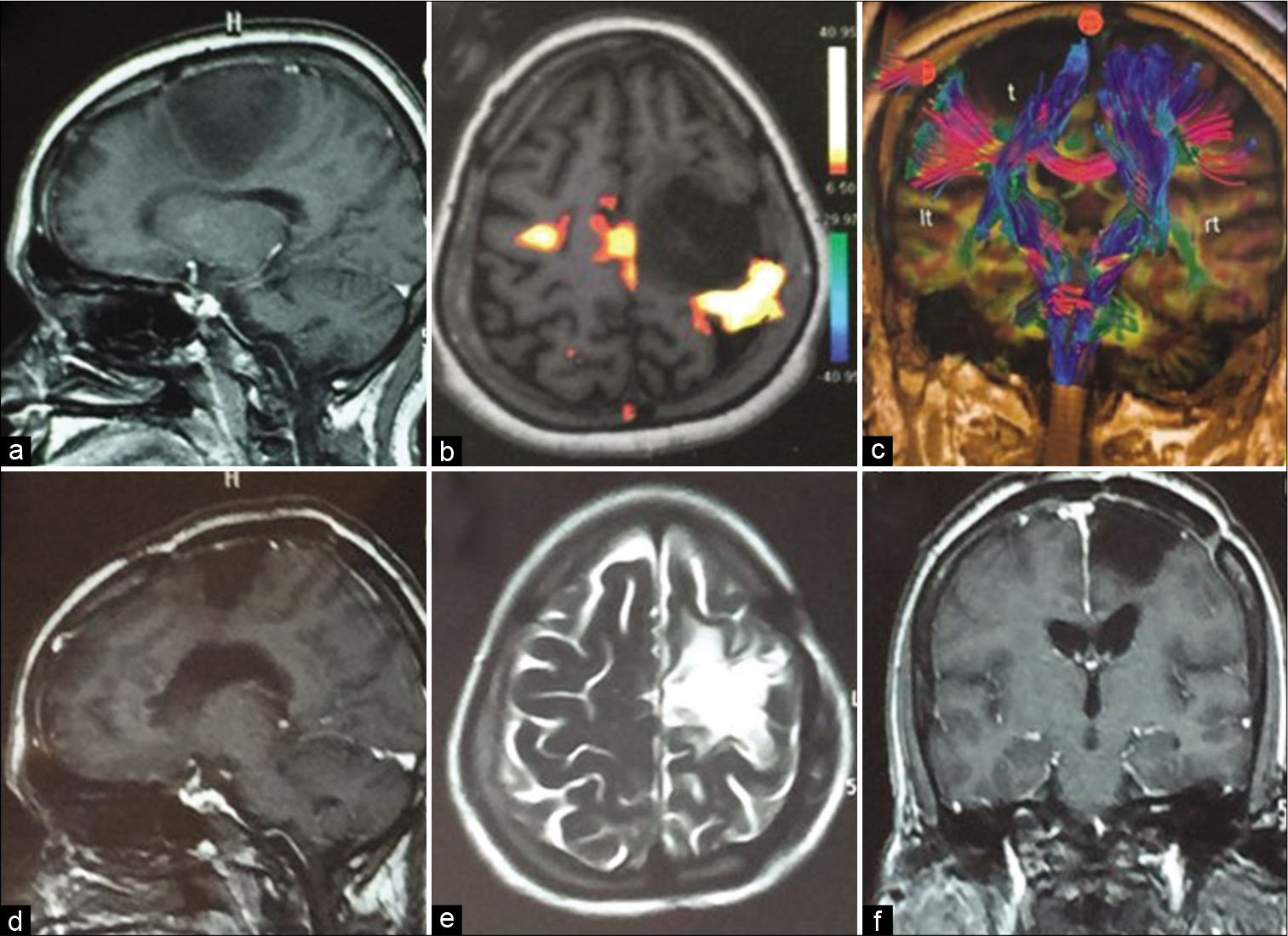Intradural extramedullary hemangioblastoma of the thoracic cord: A case report
Date of publication: 30-Mar-2021
Background: Spinal hemangioblastomas account for 1–3% of all spinal cord tumors and are mostly intramedullary in location. Here, we report an intradural extramedullary hemangioblastoma of the thoracic spine, occurring in in a patient without von Hippel-Lindau disease.
Interhemispheric arachnoid cyst
Date of publication: 30-Mar-2021
Background: Interhemispheric arachnoid cysts are uncommon and typically associated with other midline neurodevelopmental disorders, such as complete or partial agenesis of the corpus callosum.
Hyperperfusion and intracranial hemorrhage after burr hole surgery of chronic subdural hematoma
Date of publication: 30-Mar-2021
Background: Chronic subdural hematomas (CSDHs) mainly occur in elderly people and usually develop after minor head injuries. CSDH can be cured by a relatively simple burr hole surgery. Rarely reported, hemorrhagic postsurgical complications include subarachnoid, intracerebral, intraventricular, and remote cerebellar hemorrhages. The causes of such uncommon complications are difficult to explain and remain poorly understood.
An extremely rare presentation of AV fistula: Massive destruction of multiple vertebral bodies with paraparesis
Date of publication: 30-Mar-2021
Background: Spinal ventral epidural arteriovenous fistulas (EDAVFs) are rare and underdiagnosed entities and usually present with benign symptoms such as radiculopathy. To the best of our knowledge, EDAVFs presenting with massive vertebral body destruction have not been reported in the literature.
Solitary late spinal metastasis from apocrine salivary duct carcinoma: Case report
Date of publication: 30-Mar-2021
Background: The salivary duct carcinomas (SDCs) are rare, high-grade neoplasms involving major salivary glands. Parotid is the most frequently involved gland (85%). Apocrine phenotype (histological presence of decapitation secretions) and androgen reception expression define SDC. The clinical course of these tumors is characterized by aggressive local behavior with extraglandular extension, high recurrence rates, early metastases, and poor prognoses. Despite aggressive surgical/radiation therapy management, the rates of locoregional and metastatic relapses are high, and the mortality rates over 48 months approach 65%. Notably, there is no treatment algorithm available for managing vertebral metastases from apocrine SDC.
Significance of endoscopic hematoma evacuation in elderly patients with spontaneous putaminal hemorrhage
Date of publication: 30-Mar-2021
Background: The efficacy of endoscopic surgery for spontaneous intracerebral hemorrhages (ICH) has been previously reported, but differences in the effect between early and late elderlies remain unclear.
Circumferential intradural meningioma of the thoracic spine: Case report and literature review
Date of publication: 24-Mar-2021
Background: Meningiomas are common intradural extramedullary spinal tumors with a predilection for the thoracic spine. They are mostly benign (90%), with only a few showing malignant potential. However, circumferential intradural meningiomas surrounding the spinal cord are exceptionally rare. Here, we present a 40-year-old patient with a T6-T7 circumferential lesion who underwent surgery. In addition, we reviewed three similar cases previously reported in the literature.
Hydrocephalus in Mexican children with Coccidioidal Meningitis: Clinical, serological, and neuroimaging findings
Date of publication: 24-Mar-2021
Background: Coccidioidal meningitis (CM) is a fungal infectious disease that rarely affects children. Even in endemic areas, coccidiomycosis rarely affects the pediatric population. However, 40% of affected children develop hydrocephalus. Here, we describe the clinical, serological, and neuroimaging findings in a series of Mexican children admitted to our neurosurgical service with hydrocephalus and subsequently diagnosed with CM.
Adverse impact of smoking on the spine and spinal surgery
Date of publication: 24-Mar-2021
Background: Tobacco smokers and companies are well aware that smoking increases the risks for cancers, vascular morbidity, and early mortality. This is a review of the plethora of adverse effects chronic smoking has on spinal tissues and spinal surgery.
Predictors of stimulation-induced seizures during perirolandic glioma resection using intraoperative mapping techniques
Date of publication: 24-Mar-2021
Background: Intraoperative mapping techniques maximize safety and efficacy during perirolandic glioma resection but may induce seizures and limit the procedure. We aim to report the incidence and predictors of stimulation-induced seizures during mapping either patient is awake or under general anesthesia (GA).


